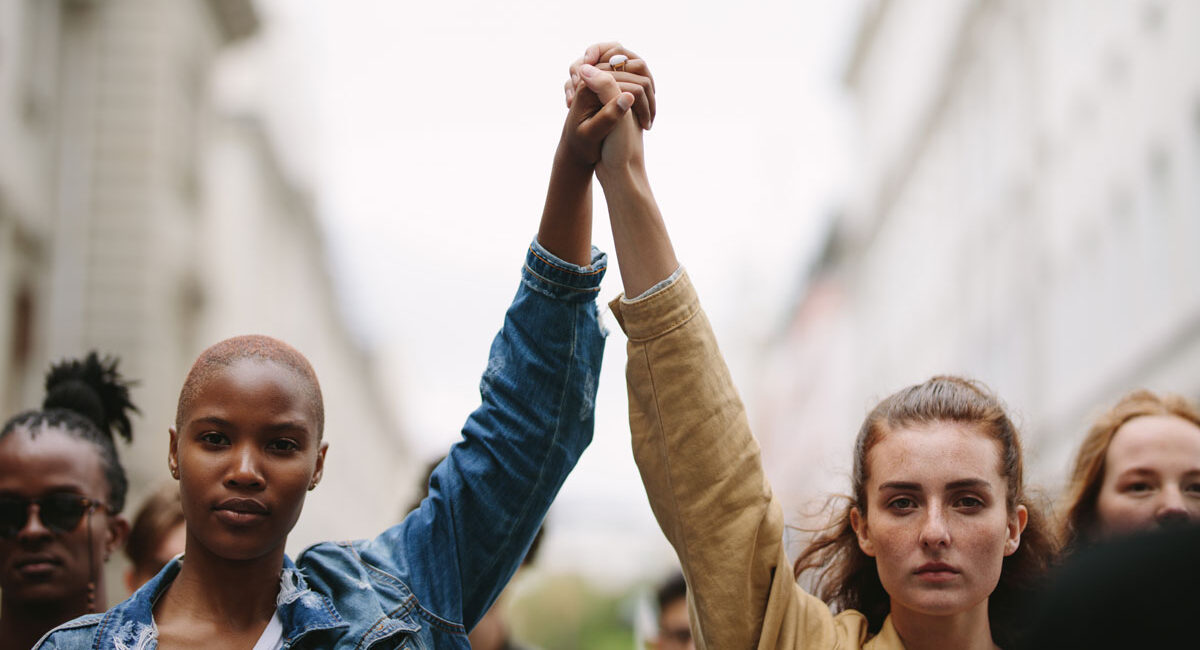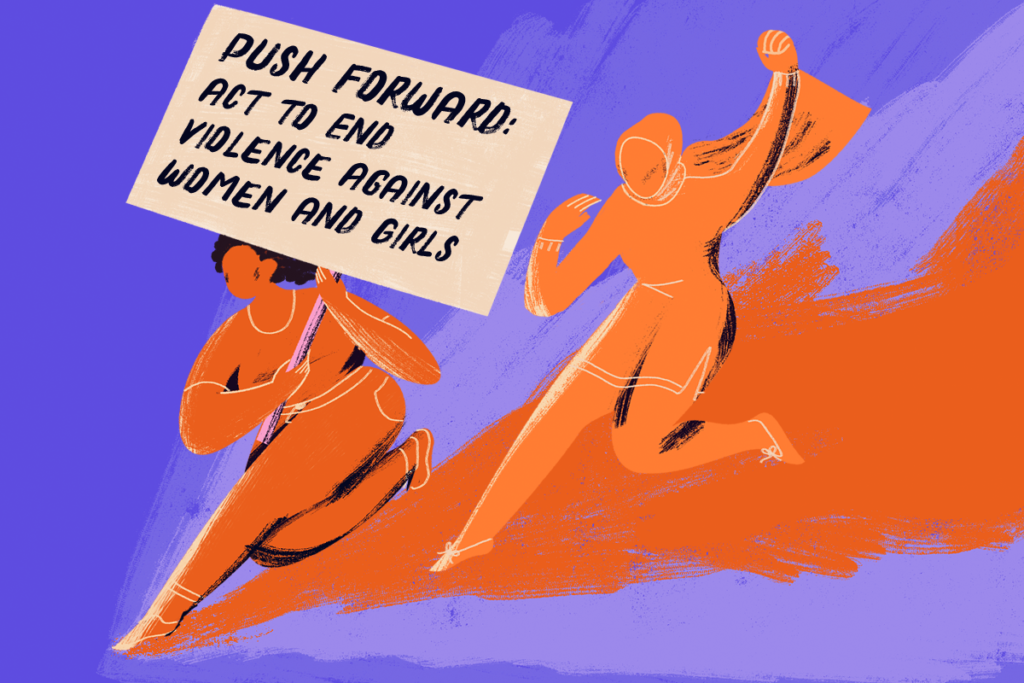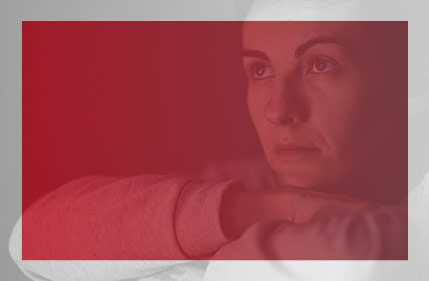VIOLENCE AGAINST WOMEN: HOW CAN STORYTELLING IN FICTION BECOME PART OF THE SOLUTION?

Ending violence against women and girls has been the goal of the MaLisa Foundation since it was established in 2016. Media shape our perception of reality and thus bear a special responsibility – all the more so for such an urgent societal issue as gender-based violence. A study published in November 2021, initiated and funded by the MaLisa Foundation and UFA GmbH, provides for the first time a representative overview of how audiovisual media portray gender-based violence. Several workshops and industry events followed in 2022. How can media professionals who create fictional content be part of the solution to this urgent societal issue?
Every hour, more than 14 women in Germany are victims of intimate partner violence. In 2022, there were 432 cases of intimate partner violence on average – every day. That represents an increase of 8.5 percent in the number of victims compared to the previous year. According to the report, about 80 percent of the victims were women, while 78 percent of the perpetrators were men.
These figures were published by the Federal Criminal Police Office (BKA) together with the Family and Interior Ministries on July 11, 2023, in the Report on Domestic Violence.
And those are only the cases that were reported to the police. In cases of sexual assault in particular, but also stalking and domestic violence, it can be assumed that a very large number of cases go unreported, as many victims/survivors do not go to the police at all. The data available for Germany is still very limited. The last comprehensive government report on the prevalence of violence against women was published in 2004. According to representative surveys, two out of three women experience sexual harassment in their lifetime. One in seven women suffers severe sexual violence. Women with disabilities are two to three times more likely to experience sexual violence than women without disabilities.
Recently, the Ministry of the Interior and the Ministry of Family Affairs, together with the Federal Criminal Police Office (BKA), launched a study that aims to shed light on the unreported cases, but the results will not be available until 2025.
A recent survey by the initiative against domestic violence, #DieNächste, shows that more than one in three people suspect domestic violence within their immediate surroundings. Almost half of the respondents consider disputes in a partnership to be a private matter. This suggests that domestic violence is still a taboo subject in society.
How the Media Treat the Subject of Violence Against Women
This avoidance of the subject is also evident in society and politics at large. Media can play an important role in this context. The study Gender-Based Violence in German Television by Wismar University of Applied Sciences, initiated and funded by the MaLisa Foundation and UFA GmbH, published in November 2021, offers for the first time a representative overview of how audiovisual media portray gender-based violence.
The results showed that gender-based violence occurred in about one-third (34%) of television programs, across all types of programming. Often, this was explicit and severe violence against women and children. The perspective of victims/survivors was only rarely evident – it was only featured extensively in about eight percent of the cases analyzed – and a view that dealt with the structural background of the violence was also largely absent. Also missing were content warnings and information on support services for victims/survivors. Gender-based violence occurred most frequently in fictional programs.
The study was followed by several workshops and industry events in 2022. While various guides and tips for media professionals already exist for journalistic work, this is not yet the case for fiction in Germany.
This is a need that is now perceived and recognized by a growing number of industry professionals. On September 13, 2023, the MaLisa Foundation will join forces with WIFT Germany, the business network for women in the film and TV industry and digital media, the Bundesverband Schauspiel(National Actors’ Association, BFFS), the Berufsverband Kinematografie (Association of Cinema Professionals, BVK) to organize the think tank, “Gender-Based Violence in Cinema, TV and Streaming. Our Responsibility in Storytelling and Presenting”. The roundtable will bring together representatives of the various trades, discuss good practices, and draft a paper with proposals for solutions.
On Sept. 30, 2023, Foundation Director Karin Heisecke will participate in a panel on the role of media in reporting violence against women at the 45th Fall Meeting of Media Women. Other participants include Julia Cruschwitz, co-author of the book “Femizide. Frauenmorde in Deutschland” (Femicide. Murder of Women in Germany”) and Daniela Suchantke, executive director of the State Council of Women in Saxony-Anhalt e.V.. The event will be moderated by Antonia Kaloff, presenter for MDR SACHSEN-ANHALT.
Tips for Creative Professionals in Media (Focus TV, Fiction)
How media report on violence against women, the context in which they portray it, and the ideas, images, and role models they convey in the process all influence society’s perception of violence against women, its consequences, and possibilities to confront it.
Against this background, media portrayal can bolster efforts to prevent and overcome gender-based violence, or it can stand in the way of these efforts. Since every third woman over the age of 15 in Germany has already experienced violence, it is likely that a corresponding proportion of both the female audience and the female media professionals involved in productions are victims/survivors.
How can media professionals who create fictional content be part of the solution to this urgent societal issue? Here are some key points:
Representation of gender-based violence in fictional programs
Fictional narratives can communicate the important issue of gender-based violence broadly. This comes with both a societal responsibility and a challenge for creative storytelling.
How to make it work:
- Acquire expertise: Be familiar with facts and figures, current discourses, actors in the field.
- Involve experts on the topic in the development phase of programs.
- Focus more on the victim/survivor perspective (and thus expand the diversity of storytelling beyond the perpetrator perspective).
- Make clear the social context and structural dimension of violence.
- Assume responsibility towards the audience: Editorial measures that are easy to implement are, for example, inserting content warnings and information about support services for victims/survivors. The BBC’s Editorial Guidelines and Action Line can serve as inspiration.
- Inclusion of these issues and of information on support services in program-related communication/social media work is also an important element. The media’s handling of the issue of suicide can serve as inspiration here.
- Guides or other customized tools for the development and production process can facilitate the workflows.
UFA, for example, has addressed the portrayal of sexist and gender-based violence in the context of its Diversity Commitment. Their current guidelines include the following questions:
Only for narrative reasons may the depiction of sexism and sexualized violence be necessary in exceptional cases. In this case, we ask ourselves the following questions:
- What is the purpose of scenes in which my protagonists are degraded?
- What is the purpose of scenes in which people are discriminated against because of their gender?
- Which perspective do I provide in these scenes?
- Are the scenes with sexual content necessary? Which perspective do I provide in these scenes?
- Have we brought in experts / affected people for consultation?
Anchoring the topics in the training for media professions – for example in journalism schools and film schools – can play an important role here and have a lasting effect.
Gender-based violence against media professionals
The prevention of (sexualized) violence and abuse of power in the context of media production is not only a legal obligation for employers, but also a prerequisite for good working conditions in the creative process.
How to make it work:
- Work with intimacy and stunt coordinators for scenes depicting intimacy or (sexualized) violence.
- Inform all employees about who victims of sexual harassment and violence can turn to: an internal contact point, if available, and/or the independent organization, Themis, which works to end sexual harassment and violence in the film, TV, theater, and music industries and offers psychological and legal counseling for victims. https://themis-vertrauensstelle.de/
- Introduce effective, frequent prevention measures (Themis Trust Center recommends ongoing awareness-raising events, encouraging self-reflection within the team, providing information material, taking a clear and unambiguous stance against sexual harassment, and implementing company agreements).
- Self-commitments and professional standards / codes, from journalism, for example, as well as from other countries, could also serve as inspiration for the field of fiction.
- ➔ Codex for media houses: “Protecting journalists from violence and threats”.
- ➔International Federation of Journalists 2019 Guidelines for media and unions to combat online harassment of women journalists.
- ➔In South Africa, numerous representatives of the industry have signed a “Statement of Commitment for Gender Equality in South African Media” (with the aim of preventing gender-based violence), which includes commitments in three areas: “Gender-sensitive reporting,” “Un-stereotyping entertainment and storytelling,” and “Creating a safe and equal space behind the scenes.”
For further reading: Tips, tools and courses of action
As a resource for media professionals, the MaLisa Foundation has compiled a detailed overview on mediendiversität.de with potential courses of action, tips and tools for approaching the issue of “violence against women”. The spectrum spans from short and concise guides that can be used as checklists for everyday editorial work, to detailed analyses of violence against women and girls.
The Foundation also offers media professionals individual guidance and support in implementation on request. “We are already seeing positive developments and a more conscious approach to the issue,” says the Foundations’ director, Karin Heisecke.
We can end violence against women and girls.
In a guest article on Focus online, the Foundation’s director invites readers to imagine a world without violence against women and girls: “Ending violence against women and girls is possible. It is important not to lose sight of this, but instead to see what contribution each of us can make: Imagine how the world, how our daily lives will look when there is no more violence against women. How will we communicate with each other, how will we behave, at home and in public spaces? What will we be able to let go, what will we start anew? And what will we do right now to move closer to that vision?”
In a social media initiative, the MaLisa Foundation invites colleagues and companions to share their vision of a future where violence against women has ended.
SUPPORT SERVICES FOR VICTIMS/SURVIVORS
The Violence Against Women support hotline is a nationwide counseling service in Germany for women who have experienced or are still experiencing violence.
The Sexual Abuse Help Portal advises young people and adults in Germany by phone and online confidentially and securely on all questions related to the topic of sexual abuse.
International information:
A table of national women’s helplines available in 46 European Countries:
https://wave-network.org/list-of-helplines-in-46-countries/
An international list of country help lines, provided by UN Women:
https://www.endvawnow.org/en/need-help


